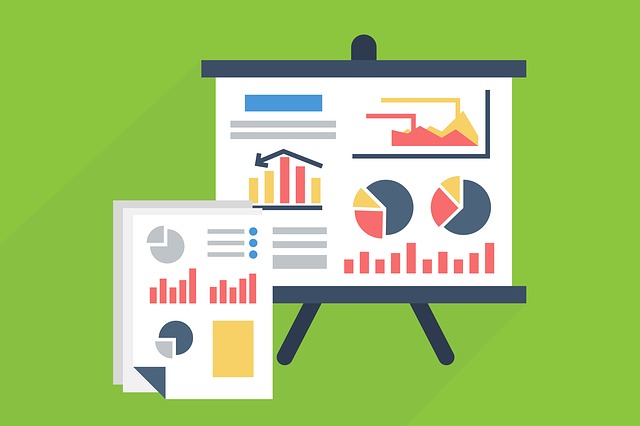Imagine you are a master chef preparing a gourmet meal for a distinguished panel of judges. You meticulously select the finest ingredients, craft the perfect flavors, and present your creation with utmost care. But how do you know if your masterpiece has truly impressed the discerning palates?
Just like in the culinary world, measuring the success of your email campaigns requires careful analysis and reporting.
In the realm of email marketing, email analytics and reporting serve as your trusty sous chefs, providing you with the vital insights needed to gauge the effectiveness of your campaigns. By tracking metrics such as open rates, click-through rates, conversion rates, and subscriber engagement, you can assess the impact of your emails and make data-driven decisions to optimize your performance.
In this article, we will explore the various techniques and tools available to measure the success of your email campaigns. From setting clear goals to utilizing A/B testing and leveraging email analytics, you will learn how to maximize the effectiveness of your email marketing strategies.
So grab your apron and let’s dive into the world of email analytics and reporting!
Key Takeaways
- Email analytics and reporting are essential for measuring the success of email campaigns.
- Metrics such as open rates, click-through rates, conversion rates, and subscriber engagement help assess the impact of emails.
- Effective subject lines and personalized content improve email performance.
- Tracking open rates and click-through rates provide insights into engagement.
Set Clear Goals for Your Email Campaigns
Set clear goals for your email campaigns so you can track and measure their success, allowing you to optimize your strategies and drive better results.
Developing effective email subject lines is crucial for capturing your audience’s attention and increasing open rates. A compelling subject line should be concise, intriguing, and personalized to resonate with your recipients. Consider using personalization tokens to dynamically include the recipient’s name or other relevant information in the subject line.
Additionally, creating personalized email content is essential for engaging your subscribers and encouraging them to take action. Tailor your content to meet the needs and interests of your target audience, and use segmentation to send more relevant emails.
By setting clear goals and focusing on developing effective subject lines and personalized content, you can improve the performance of your email campaigns.
Now let’s delve into how you can track open rates and click-through rates to further optimize your email marketing efforts.
Track Open Rates and Click-Through Rates
Get ready to dive into the data ocean and explore the waves of open rates and click-through rates, riding the waves of engagement like a pro surfer. Email engagement is a critical factor in measuring the success of your email campaigns.
To effectively track open rates and click-through rates, consider the following:
-
Email deliverability: Ensure that your emails are actually reaching your subscribers’ inboxes by monitoring your deliverability rates. High deliverability rates indicate that your emails are successfully reaching their intended recipients.
-
Open rates: Measure the percentage of recipients who open your emails. This metric provides insights into the effectiveness of your subject lines and email content. Experiment with different subject lines to optimize open rates and increase engagement.
-
Click-through rates: Determine the percentage of recipients who click on links within your emails. This metric indicates the level of interest and engagement among your subscribers. Analyze the content and design of your emails to encourage more clicks.
Now, let’s transition into the subsequent section about monitoring conversion rates and sales.
Monitor Conversion Rates and Sales
Keep an eye on how well your emails are converting and driving sales to ensure maximum impact and ROI. Monitoring conversion rates and sales is essential for evaluating the success of your email campaigns. By analyzing customer behavior and tracking the number of conversions and sales generated from your emails, you can determine the effectiveness of your messaging and make data-driven decisions to optimize future campaigns. To help you track and analyze these metrics, use the table below:
| Metric | Calculation | Importance |
|---|---|---|
| Conversion Rate | (Number of conversions / Number of emails sent) * 100% | High |
| Sales Generated | Total revenue generated from email campaigns | High |
| Revenue per Email | Total revenue generated / Number of emails sent | Medium |
| Average Order Value | Total revenue generated / Number of conversions | Medium |
| Return on Investment (ROI) | (Total revenue generated – Total cost of email campaign) / Total cost of email campaign * 100% | High |
By monitoring ROI and analyzing customer behavior, you can make data-driven decisions to optimize your email campaigns. Next, we will discuss how to analyze subscriber engagement metrics.
Analyze Subscriber Engagement Metrics
To truly tap into the treasure trove of subscriber engagement, analyze the alluring array of metrics that reveal their involvement and interaction with your electrifying email efforts.
Subscriber segmentation allows you to categorize your audience based on their preferences and behavior, enabling you to tailor your content to specific groups for maximum impact.
By examining metrics such as open rates, click-through rates, and conversion rates, you can gain valuable insights into how well your emails are resonating with subscribers.
Additionally, monitoring email deliverability ensures that your messages are reaching the intended recipients and not getting lost in spam folders.
Analyzing these engagement metrics provides a data-driven understanding of your audience’s response to your emails, allowing you to refine and optimize your email campaigns for even greater success.
Transitioning into the next section, A/B testing can further enhance your email performance.
Use A/B Testing to Optimize Email Performance
Maximize the impact of your electrifying emails by utilizing A/B testing to optimize their performance and captivate your audience even more. A/B testing allows you to compare two versions of an email to determine which one performs better.
Start by segmenting your email list into different groups based on demographics, behavior, or preferences. This way, you can tailor your content to specific segments and increase engagement.
Test different subject lines, email designs, call-to-action buttons, or even the time of day you send your emails.
Gather data on open rates, click-through rates, and conversions to determine which version resonates best with your audience.
Once you identify the winning variation, implement it in your future campaigns to personalize your content and drive higher engagement.
By using email analytics to inform future campaigns, you can continuously improve your email performance and achieve even greater results.
Use Email Analytics to Inform Future Campaigns
Utilize the insights gained from analyzing email data to continuously refine and enhance future campaigns, driving even greater audience engagement.
Email segmentation strategies play a crucial role in this process. By segmenting your email list based on demographics, purchase history, or engagement levels, you can tailor your messages to specific groups, ensuring they’re more relevant and personalized. This targeted approach increases the chances of recipients opening and engaging with your emails.
Additionally, email deliverability optimization is essential for the success of your campaigns. Monitor your email deliverability rates and take necessary steps to improve them, such as regularly cleaning your email list, avoiding spam trigger words, and using a reputable email service provider.
By leveraging email analytics and implementing effective segmentation strategies and deliverability optimization techniques, you can maximize the impact of your future email campaigns.
Frequently Asked Questions
How can I effectively set clear goals for my email campaigns?
To effectively set clear goals for your email campaigns, start by exaggerating the importance of setting objectives. Think big and aim high!
Next, identify key performance indicators (KPIs) that align with your objectives. These could include metrics like open rates, click-through rates, and conversion rates.
By setting specific, measurable, attainable, relevant, and time-bound (SMART) goals, you can track your progress and make data-driven decisions to optimize your email campaigns for success.
What are the best ways to track open rates and click-through rates for my email campaigns?
To track open rates and click-through rates for your email campaigns, you can use various tracking metrics.
Firstly, implement tracking codes in your email links to monitor click-through rates accurately.
Secondly, use email marketing software or platforms that provide detailed analytics on open rates and click-through rates.
Analyzing these metrics will help you identify the effectiveness of your campaigns and optimize future strategies.
By continuously monitoring these data-driven metrics, you can make data-backed decisions for campaign optimization.
How can I monitor conversion rates and sales to measure the success of my email campaigns?
To monitor conversion rates and sales for your email campaigns, you may be concerned that it’s difficult to accurately measure the return on investment (ROI) and analyze customer behavior. However, by utilizing powerful email analytics tools, you can track the effectiveness of your campaigns in real-time.
These tools provide detailed data on conversion rates, sales, and customer engagement, allowing you to make data-driven decisions to optimize your email marketing strategy for maximum success.
What subscriber engagement metrics should I analyze to gain insights into the effectiveness of my email campaigns?
To gain insights into the effectiveness of your email campaigns, you should analyze subscriber engagement metrics. By segmenting your subscribers based on factors like demographics or purchase history, you can measure the response rate and click-through rate for different groups.
This data-driven approach allows you to tailor your campaigns to specific segments, increasing the likelihood of engagement.
Additionally, monitoring email deliverability metrics, such as bounce rate and spam complaints, provides valuable insights into the reach and effectiveness of your campaigns.
How can I use A/B testing to optimize the performance of my email campaigns?
To improve engagement and optimize the performance of your email campaigns, A/B testing is a valuable tool. By testing different subject lines, you can gather data on which ones generate higher open rates and click-through rates. This data-driven approach allows you to make informed decisions about which subject lines resonate best with your audience.
By continually testing and refining your subject lines, you can maximize the effectiveness of your email campaigns and drive higher engagement.
Conclusion
In conclusion, you’ve learned how to effectively measure the success of your email campaigns through email analytics and reporting.
By setting clear goals, tracking open rates and click-through rates, monitoring conversion rates and sales, analyzing subscriber engagement metrics, and using A/B testing, you can optimize your email performance and inform future campaigns.
Remember, data is your secret weapon, so harness its power to drive results. With these insights, you’ll be able to navigate the vast sea of email marketing with the precision of a skilled captain steering a ship towards success.








